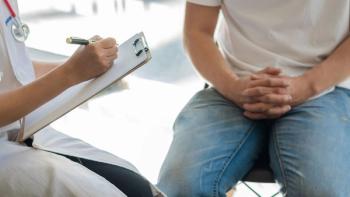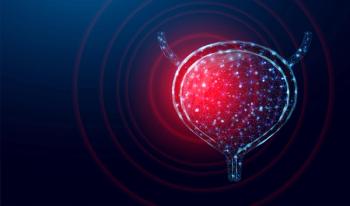
Cyclophosphamide ‘Opens the Registry Up’ for Stem Cell Transplants
Post-transplant cyclophosphamide decreased the risk of complications in patients with blood cancers who underwent a stem cell transplant from an unrelated donor.
For patients with blood cancers such as myelodysplastic syndrome (MDS), the use of cyclophosphamide was effective in preventing graft-versus host disease (GVHD) after a stem cell transplant from an unrelated donor, according to a recent study.
These findings, which were published in the Journal of Clinical Oncology, “opens the [transplant] registry up to people regardless of where they came from,” explained study author Dr. Brian C. Shaffer.
READ MORE:
Schaffer is an associate professor and director of donors search and acquisition services at Memorial Sloan Kettering Cancer Center. In a recent interview with CURE® he discussed the study, and how the use of post-transplant cyclophosphamide can mitigate racial disparities by expanding the amount of people eligible for stem cell transplant.
CURE®: Can you provide a brief overview of this research, and why it was important to conduct?
Shaffer: When you look at the types of genes in humans that control the immune system, there's obviously a lot of diversity in those genes, because that helps to protect humans from pathogens. But the problem is that diversity can be challenging when you're trying to match immune systems for a bone marrow transplant or stem cell transplant. What we know is that geographically, there's differences in the amount of diversity in these immune genes and … it's become the case that people from the northern parts of Europe — places like Ireland, France, Scandinavia, Germany — there's less diversity. The common genes are much more common. And so, when a person of Northern European ancestry goes to the registry to find a donor, the likelihood that they can find what we consider a fully matched donor is around 75% whereas, if you're not from that particular ancestry, the likelihood is much less, mainly because there's just more diversity in the in the genes that control the immune system. We know that patients that underwent transplant from a donor that wasn't matched to them had much worse survival compared to patients that had a matched donor transplant.
About 20 years ago, a group at Johns Hopkins piloted this method using a drug called cyclophosphamide, which is a drug that will destroy activated immune cells. But stem cells can protect themselves from this drug, by and large, and they started doing this transplant in patients using a family member that was half-matched. And when they did this method, it turned out that that worked quite well, and these, quote, haploidentical donors, half-matched donors became widely used in the United States and particularly in other emerging economies like South America and other places [such as] Asia.
[Our team started to think] how can we use this method that has been used for people with a half-matched family member? Can we also use this with unrelated people?
What were the findings of the trial?
The main finding of the paper is that if you use this cyclophosphamide-based prevention of rejection, the survival was exactly the same if you have a seven of eight donor or an eight of eight donor. This [means] one immune gene out of out of eight [matches], sort of important immune genes where you're mismatched.
Then, importantly, we modeled the registry and asked the question: if we consider a seven of eight donor good enough, what's the likelihood that you have at least one of those donors in the registry, or many of those donors? The answer is that it dramatically improves the likelihood that you'll have access to a donor in the registry, particularly for people that aren't from that sort of Northern European ancestry.
How can this affect treatment or transplant options for these patients?
This impacts people from really a wide range of different backgrounds and we really think opens the registry up to people regardless of where they came from. So that was the main message from the paper, that with this approach, we can deliver something tangible for the patient — being alive, being free from immune-related problems from the donor — at a rate that's similar across all the different you know, different ancestries.
These are lesser findings, but we also found that the post-transplant cyclophosphamide approach was really better than the standard approach, with using a calcineurin inhibitor [a type of immunosuppressant drug] as a primary way of preventing rejection.
[Ultimately] post-transplant cyclophosphamide really was better across the board, and also opened the registry up. So we were really excited about that message, and that's really been the thing that we've been trying to communicate to the transplant community is that you don't need to see somebody that maybe is from a diverse background, and the first thing you think is, “I'm never going to get them a donor.” There's a there's a donor for everyone, whether it's a half-matched family member or whether it's an unrelated donor.
For more news on cancer updates, research and education, don’t forget to





